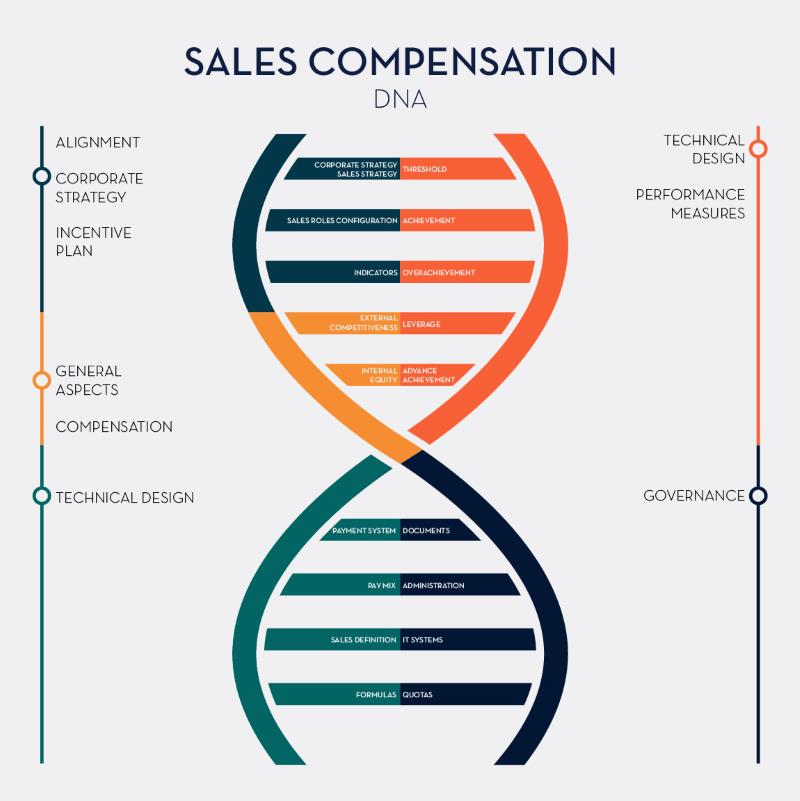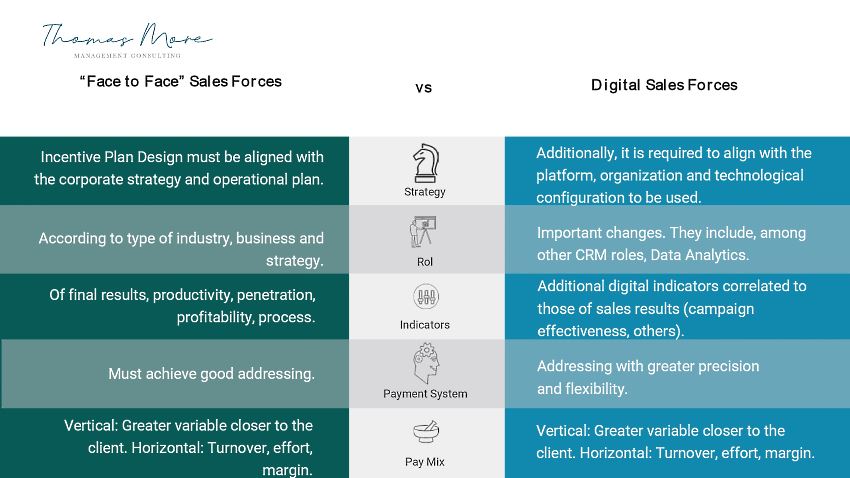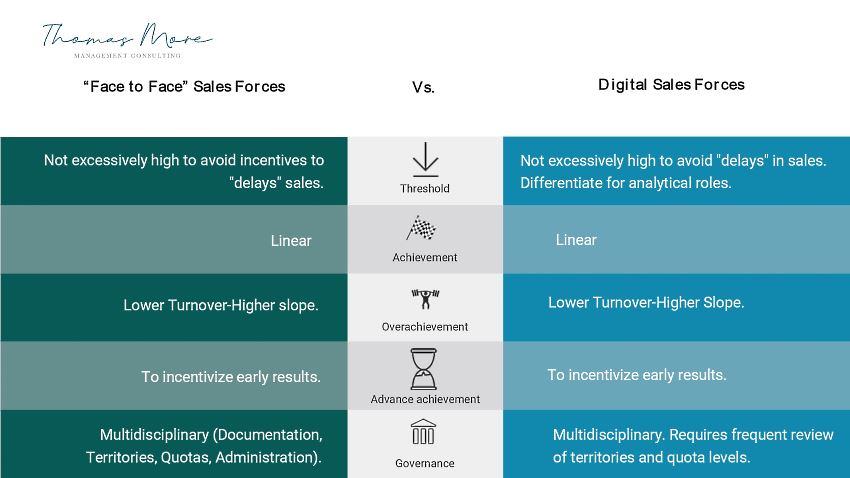Digital Sales vs. Face-to-Face Sales
Similarities and differences in compensation for sales forces
Maintaining companies’ income during quarantine has been one of the organizations priorities since the beginning of the crisis caused by Covid-19. And it has been the digital transformation or the strengthening of the digital one of the measures or solutions applied to this important matter.
Even though digital is not a new topic, definitely at the end of the pandemic we will find a significant number of companies that, in one way or another, will have partially or totally carried out a process of transformation of this nature.
Many of these organizations would likely already have face-to-face sales forces to some degree, so the process of digital transformation implies that face-to-face and digital sales forces will coexist in some cases.
But like face-to-face sales forces, digital forces require incentive plans that produce differences between average results and extraordinary results.
This text that we share today aims to show the rough differences that exist, in some outstanding aspects, between sales compensation for face-to-face forces and sales compensation for digital forces, both at the design level and at the governance level.
To structure the article, we will rely on our Sales Compensation DNA © that we reproduce below and tables # 1 and # 2 that show the comparison between both types of design (face-to-face and digital).

As established in our Sales Compensation DNA©1, the design of a sales incentive plan (digital or not) can be structured following five modules:
- Alignment: comprising Strategy, Roles and Indicators
- General aspects: External Competitiveness and Internal Equity
- Technical design: Payment System, Payment Mix, Definition of achievement, Formulas
- Performance measures / incentives: Minimum Compliance, Compliance, Overcompliance, Advance Compliance
- Governance: which includes aspects such as Quotas, Documentation, Administration)
Following the previous structure, we have:
Module I: Alignment
Every incentive plan must be aligned with the company's strategy. The general design of the plan (formulas, pay mix, among others) must be configured in order to produce what the company's strategic plan requires. Thus, for example and in a simple way, if it is necessary to obtain better margins and new customers, the incentive plan must be configured to help produce this effect. But in the case of digital sales forces, a second alignment is additionally necessary, which has to do with: the configuration of the bureaucratically conceived organization as well as the technological platform; who or who "produce" the sales effectively, and in what way and how the different platforms are configured to produce that effect. This is an aspect that is important when aligning the incentive plan with the “virtual” organization.
In addition, within the same alignment module, in the case of digital sales forces, different roles appear than those of the organization of face-to-face sales forces (the organization of CRM, Data Analytics, among others). Within the digital world, these functions do not “sell” directly, but their work is essential to determine the different clusters, strata, and analyzes within which customers are located, and thus be able to act effectively. A good articulation between these functions and the expected final result of sales is then essential.
Likewise, when defining the final indicators of sales, the rest of the same indicators that are not of results must be “correlated” with sales, in such a way that there is alignment between the payment and the results obtained.
Module II: General aspects
Market policy does not change from a technical point of view whether it is a face-to-face or a digital sales force, but the compensation specialist / practitioner should become familiar with the roles of the digital sales force and the levels of demand of these roles. Regarding internal equity, in the case of digital sales forces it is important to monitor the payment system and the territories definition.
Module III: Technical design
Two aspects stand out in this module: first, the payment system. Roughly speaking, the chosen payment system must direct the sales force to the different products, services, and clients as the need arises. But in the case of the digital sales force, this addressing must be done with greater precision and also with greater flexibility.
The second aspect that stands out is the pay mix. In the face-to-face world, the payment mix has to do with vertical and horizontal criteria. In general, the vertical criterion refers to closeness to the client: closer to the most variable client (proportionally) - less close to the least variable client. In the digital world, this criterion must be maintained, although sometimes it is not so evident to determine it, and it must also be combined with horizontal criteria (turnover, effort, margin) to achieve greater effectiveness.
Module IV: Performance measures
The tables". In table # 2 we appreciate the fundamental aspects of the stimuli, which do not differ in their essence in the virtual world in relation to the face-to-face. What they do differ in is the ability to place them at the appropriate values, since in the digital world the effect of a “high” threshold, although it may have an impact on sales, is more detailed and subtle. As for the other measures, whether digital or not, the default achievement, with exceptions, must be linear, as well as the default overachievement must be "exponential" / of greater slope inversely correlated with the "turnover" of the product or service .
Table No. 1

Table No. 2

Module V: Governance
In addition to the issue of quotas, close monitoring of the sales territories and their definitions should be carried out, since these virtual sales territories may overlap or be diluted geographically by customer and industry as there are multiple access channels by the customer .
The digital world does not differ structurally from the face-to-face world in terms of sales compensation, but it does with respect to the application of the criteria used in it. Thus, the aspects that differ most are: the roles, the indicators to be applied, the alignment of the plan with the bureaucratic-virtual organization, and at the governance level, the definition and monitoring of territories.
Federico López
Managing Partner
Thomas More Management Consulting
1 It is not the purpose of this article to explain in detail our Sales Compensation DNA©. This is found in more detail in our Sales Compensation book available at Amazon©



